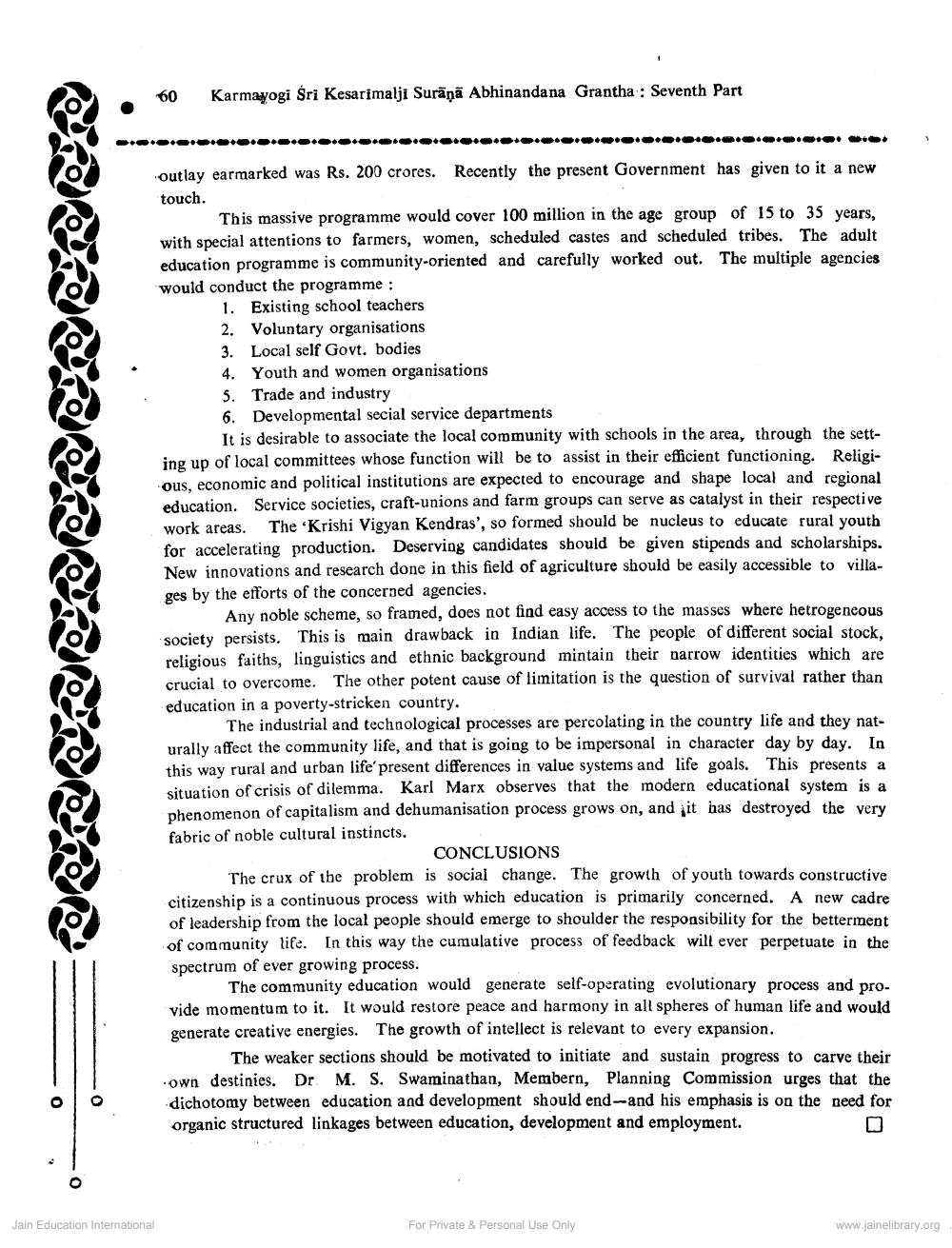________________
60
Karmayogi Sri Kesarimalji Surāņā Abhinandana Grantha : Seventh Part
outlay earmarked was Rs. 200 crores. Recently the present Government has given to it a new touch.
This massive programme would cover 100 million in the age group of 15 to 35 years, with special attentions to farmers, women, scheduled castes and scheduled tribes. The adult education programme is community-oriented and carefully worked out. The multiple agencies would conduct the programme :
1. Existing school teachers 2. Voluntary organisations 3. Local self Govt. bodies 4. Youth and women organisations 5. Trade and industry 6. Developmental secial service departments
It is desirable to associate the local community with schools in the area, through the setting up of local committees whose function will be to assist in their efficient functioning. Religious, economic and political institutions are expected to encourage and shape local and regional education. Service societies, craft-unions and farm groups can serve as catalyst in their respective work areas. The Krishi Vigyan Kendras', so formed should be nucleus to educate rural youth for accelerating production. Deserving candidates should be given stipends and scholarships. New innovations and research done in this field of agriculture should be easily accessible to villages by the efforts of the concerned agencies.
Any noble scheme, so framed, does not find easy access to the masses where hetrogeneous society persists. This is main drawback in Indian life. The people of different social stock, religious faiths, linguistics and ethnic background mintain their narrow identities which are crucial to overcome. The other potent cause of limitation is the question of survival rather than education in a poverty-stricken country.
The industrial and technological processes are percolating in the country life and they naturally affect the community life, and that is going to be impersonal in character day by day. In this way rural and urban life' present differences in value systems and life goals. This presents a situation of crisis of dilemma. Karl Marx observes that the modern educational system is a phenomenon of capitalism and dehumanisation process grows on, and it has destroyed the very fabric of noble cultural instincts.
CONCLUSIONS The crux of the problem is social change. The growth of youth towards constructive citizenship is a continuous process with which education is primarily concerned. A new cadre of leadership from the local people should emerge to shoulder the responsibility for the betterment of community life. In this way the cumulative process of feedback will ever perpetuate in the spectrum of ever growing process.
The community education would generate self-operating evolutionary process and provide momentum to it. It would restore peace and harmony in all spheres of human life and would generate creative energies. The growth of intellect is relevant to every expansion.
The weaker sections should be motivated to initiate and sustain progress to carve their own destinies. Dr. M. S. Swaminathan, Membern, Planning Commission urges that the dichotomy between education and development should end--and his emphasis is on the need for organic structured linkages between education, development and employment.
Jain Education International
For Private & Personal Use Only
www.jainelibrary.org




